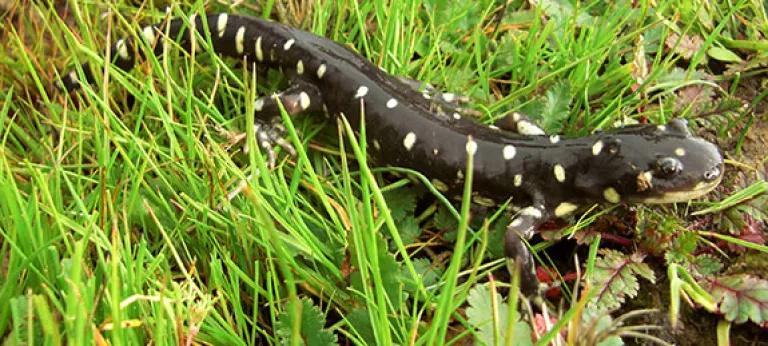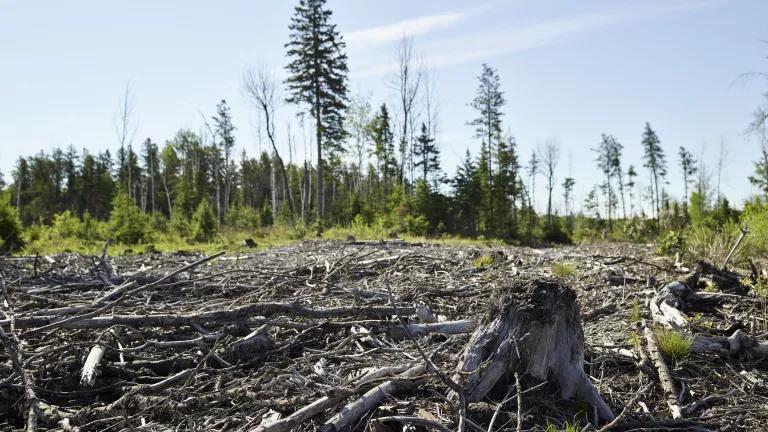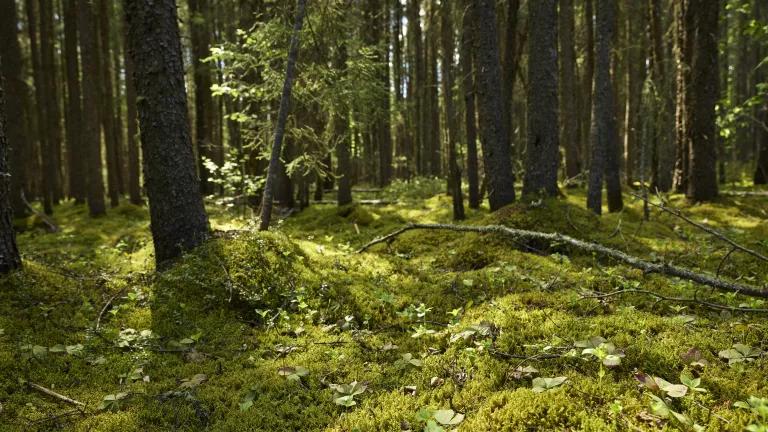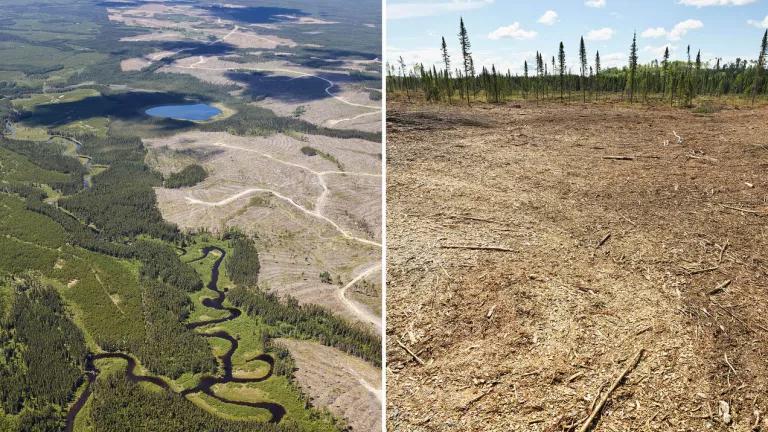To Save Species, Protect 30% of Freshwaters by 2030

As the world comes together to celebrate the importance of biodiversity, it’s a good time to pause and reflect upon the importance of freshwater to the Earth and all its inhabitants. Freshwater habitats and species, like many ocean and land-based species, have suffered serious declines in the last few decades. To stem these declines and ensure that Nature can continue to provide the crucial services on which we all depend, the international conservation community is calling on our leaders to establish a goal of protecting 30% of the planet by 2030 (known as the “30x30” initiative). Protecting a wide array of productive freshwater habitats must be a critical part of this initiative.
Freshwater areas are tremendously important to the world’s biodiversity
Rivers, lakes, and wetlands are home to an extraordinary diversity of life. Even though they cover less than 1% of Earth’s surface, these habitats support approximately one-third of vertebrate species and 10% of all species. These species run the gamut from large mammals to dragonflies, to turtles, fishes, crabs, and birds.
Wetlands alone support more than one-third of the United States’ threatened and endangered species. Endangered and threatened species that inhabit wetlands include the Mississippi sandhill crane, the Hine’s emerald dragonfly, the California tiger salamander, the New Mexico meadow jumping mouse, the green pitcher plant, and the bog turtle, just to name a few.

Freshwater habitats also provide essential services to communities
Freshwater ecosystems are also essential to human well‐being. Freshwaters directly contribute to the livelihoods of billions of people and provide a range of services worth $6.5 trillion every year. This amount makes up 20% of the total value provided by all of Earth’s ecosystems, despite the fact that freshwater areas occupy a tiny fraction of the planet’s surface.
The services provided by freshwater areas include drinking water supplies, tourism, recreation, habitat for animals and plants we eat, protection from storms, and erosion and flood control. Inland wetlands like peatlands and coastal wetlands like mangroves are also massive storehouses of carbon, making them hugely important in the fight against climate change. Peatlands alone only cover about 3% of the world’s land surface, but they store at least twice as much carbon as all of Earth’s standing forests.

Despite their importance, freshwater areas are endangered—and disappearing
But freshwater ecosystems and biodiversity are among the most threatened on Earth. The planet has lost 64-71% of its inland wetlands during the twentieth century alone, and the current rate of wetland loss is three times that of forest loss. Dams and diversions throughout the world alter flows and deprive rivers, floodplains, and riparian ecosystems of the water needed to function. There are over 90,000 dams in the United States, and fewer than 20% of rivers more than 1,000km long in the United States remain free-flowing.The impact of these habitat alterations is devastating. Populations of monitored freshwater species declined 83% between 1970 and 2014. Based on recent assessments, 27% of remaining freshwater-dependent species are threatened with extinction. These species are uniquely vulnerable. Populations of freshwater vertebrate species have fallen at more than twice the rate of land or ocean vertebrates in recent decades.

The major causes of freshwater biodiversity loss are:
- Flow alteration – changes to water flows storage and delivery of water for agricultural, industrial, or domestic uses; power generation; or flood control. Today, nearly 75% of freshwater resources are devoted to crop or livestock production.
- Pollution – contamination from sewage, fertilizers, synthetic chemicals, pharmaceuticals, plastics, sediment, salt, heat, trash, and other substances. Of the freshwaters in the United States that have been assessed, more than 50% of river miles, 70% of lake acres, and 50% of wetland acres are too polluted to meet water quality standards.
- Habitat degradation and loss – land conversion for agriculture and development, reduced hydrological connectivity after dam and levee construction.
- Exploitation of species – the harvesting of species from the wild at rates faster than natural populations can recover.
- Invasive non-native species – introduction of species that causes behavioral shifts of native species, restructuring of the food web, and elimination of plants.
Climate change exacerbates all of these existing threats. Rivers and lakes are warming, rising sea levels are causing salty sea water to intrude into groundwater, droughts and extreme storms are becoming more frequent, and more precipitation is falling as rain instead of snow. All of these changing patterns put increased stress on species struggling to survive in already compromised habitats.

We need to establish a protection goal for freshwater areas
Worldwide, the vast majority of freshwater ecosystems are totally unprotected. Only about 10-20% of freshwater habitats are located within protected areas, a fraction that lags behind the protection of land and ocean areas. The International Union for Conservation of Nature (IUCN) has stated that “the current approach to conserving inland waters biodiversity is falling far short.”
Many protection targets combine inland waters with terrestrial goals, treating waters as part of the lands in which they’re embedded. But according to the IUCN, this “lumping” ignores the distinct threats that freshwaters face. It’s not enough to hope that protecting 30% of lands will result in the level of protection that freshwater areas require. When the emphasis is on protecting terrestrial areas, land management efforts aren’t usually focused on aquatic ecosystems, which are often affected by upstream threats from outside protected areas. Land protection doesn’t address the connectivity of freshwaters throughout the landscape, and it can sometimes permit activities that are harmful to aquatic ecosystems, such as the building of dams.
Given the importance of freshwater resources and freshwater-dependent species to ecosystems and communities, it’s clear that we must do more to conserve these critical areas.
That’s why biodiversity experts recommend defining a distinct sub-target for the protection of inland waters. One proposed conservation plan describes “protecting and restoring 30% of the world’s freshwater ecoregions by 2030” as a “vital milestone.”

What it means to protect 30% of freshwater areas
Unlike land and ocean, many freshwater features cannot be easily measured in acres. However, establishing conservation goals becomes more intuitive when different types of freshwaters—like rivers, lakes, and wetlands—are considered separately. A wetland or lake protection goal of 30% could be measured in acres, while the same goal for river systems could be framed as length in miles of riverine habitat. It likely makes sense for separate 30% targets to be set for each of these freshwater resource types.
Scientists agree that protected areas should be as broadly representative of habitats and ecoregions as possible, so these protected freshwater areas should be chosen with that ultimate goal in mind. Other factors to consider when selecting freshwaters for conservation should include the condition of the resource, the number and status of species that depend on it for habitat, its connectivity with nearby waters, its carbon storage potential, and other ecosystem services it provides, like drinking water or flood protection.
Once we decide which rivers, lakes, and wetlands to target, what does it mean for a freshwater area to be “protected”? In our view, protection means the establishment of enduring measures on land and waters and in oceans, such that their natural character, resources, and functions are preserved and restored for current and future generations. In the freshwater context, that means maintaining ecological flow regimes and connectivity, preventing pollution and destruction, and protecting aquatic species.
Meeting these goals might require not only conserving existing freshwater systems but also actively restoring areas that have been degraded or destroyed.
Making freshwater protection a reality
Protecting freshwater biodiversity will require worldwide effort, and it is incumbent upon us all to do our part. That means not only supporting international initiatives, but also acting here at home.
There is a wide array of policy measures at our disposal to put these protections in place, from the federal Clean Water Act and Wild & Scenic Rivers Act to local land use laws and voluntary conservation measures.
One key action in the immediate term will be to overturn the Trump administration’s Dirty Water Rule, which slashes protections for freshwaters across the country. According to the government’s preliminary estimates, about half of wetlands in the United States are at risk of being polluted and destroyed as a result of this rule. It also removes federal protections for all rain-dependent streams, which represent more than 18% of the country’s streams and nearly 40% of streams in the arid west. As the EPA itself has recognized, these streams provide essential habitat for various animals, including reptiles, amphibians, birds, and mammals.
But getting rid of this harmful rule is not enough. Protecting 30% of freshwaters will require a comprehensive approach including actions at the federal, state, and local level. Establishing a standalone conservation target for inland waters as part of the 30x30 initiative is the first step in the process.





